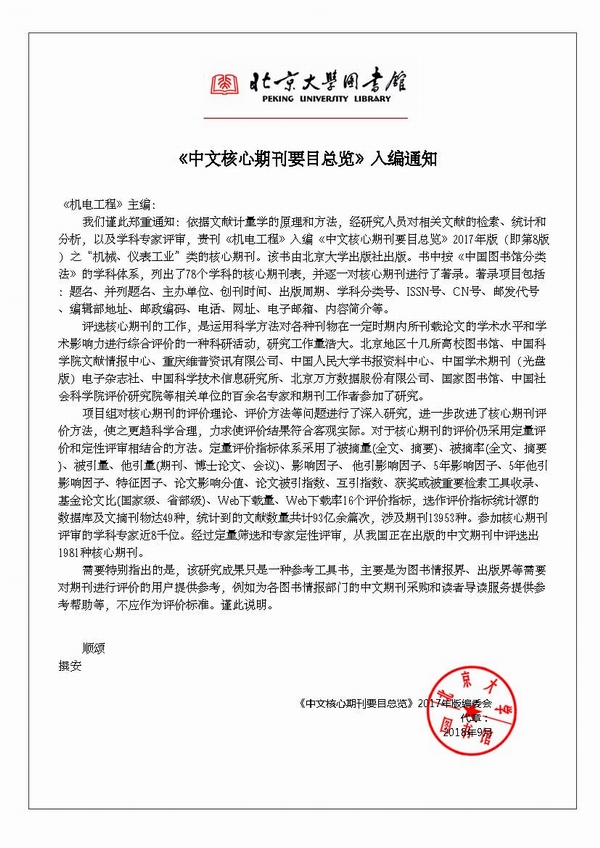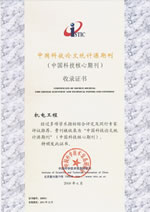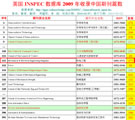
Founded in 1971 >
Chinese Sci-tech Core Periodicals >
British Science Abstracts (SA, INSPEC) Indexed Journals >
United States, Cambridge Scientific Abstract: Technology (CSA: T) Indexed Journals >
United States, Ulrich's Periodicals Directory(UPD)Indexed Journals >
United States, Cambridge Scientific Abstract: Natural Science (CSA: NS) Indexed Journals >
Poland ,Index of Copernicus(IC) Indexed Journals >
International Standard Serial Number:
ISSN 1001-4551
Sponsor:
Zhejiang University;
Zhejiang Machinery and Electrical Group
Edited by:
Editorial of Journal of Mechanical & Electrical Engineering
Chief Editor:
ZHAO Qun
Vice Chief Editor:
TANG ren-zhong,
LUO Xiang-yang
Tel:
86-571-87041360,87239525
Fax:
86-571-87239571
Add:
No.9 Gaoguannong,Daxue Road,Hangzhou,China
P.C:
310009
E-mail:
meem_contribute@163.com
Abstract: In order to solve the problems that it was difficult to extract fault features caused by non-stationary and nonlinear vibration signals of rolling bearings, traditional fault diagnosis methods relied too much on expert experience and deep learning fault diagnosis methods required massive training data, etc., a rolling bearing fault diagnosis method based on feature fusion and deep residual neural network (ResNet) was proposed. Firstly, the original signal was decomposed by variational modal decomposition (VMD) and empirical mode decomposition (EMD). Then, the effective components were determined by variance contribution rate and correlation coefficient screening, and the selected effective components were subjected to feature fusion to form a data set and input them into the ResNet model for fault diagnosis. Finally, the feasibility and effectiveness of the fault diagnosis method for rolling bearings based on feature fusion and depth residual neural network (ResNet) were verified by using open source data sets, and the rolling bearing example was used to verify its generalization ability and robustness. The test results show that the method has a fault recognition rate of 99.8% in the opensource data set, which is higher than the 90% fault recognition rate of the traditional convolutional neural network (CNN). In the rolling bearing example data set, the fault recognition rate reaches more than 97%, which further proves that the fault diagnosis method of feature fusion combined with deep residual neural network can be effectively applied to rolling bearing fault diagnosis.
Key words: fault information extraction; fault diagnosis accuracy; residual neural network (ResNet); variational modal decomposition (VMD); empirical mode decomposition (EMD); effective components; feature fusion








